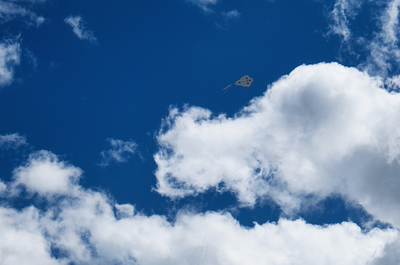Welcome at the Interface Culture program website.
Acting as creative artists and researchers, students learn how to advance the state of the art of current interface technologies and applications. Through interdisciplinary research and team work, they also develop new aspects of interface design including its cultural and social applications. The themes elaborated under the Master's programme in relation to interactive technologies include Interactive Environments, Interactive Art, Ubiquitous Computing, game design, VR and MR environments, Sound Art, Media Art, Web-Art, Software Art, HCI research and interaction design.

The Interface Culture program at the Linz University of Arts Department of Media was founded in 2004 by Christa Sommerer and Laurent Mignonneau. The program teaches students of human-machine interaction to develop innovative interfaces that harness new interface technologies at the confluence of art, research, application and design, and to investigate the cultural and social possibilities of implementing them.
The term "interface" is omnipresent nowadays. Basically, it describes an intersection or linkage between different computer systems that makes use of hardware components and software programs to enable the exchange and transmission of digital information via communications protocols.
However, an interface also describes the hook-up between human and machine, whereby the human qua user undertakes interaction as a means of operating and influencing the software and hardware components of a digital system. An interface thus enables human beings to communicate with digital technologies as well as to generate, receive and exchange data. Examples of interfaces in very widespread use are the mouse-keyboard interface and graphical user interfaces (i.e. desktop metaphors). In recent years, though, we have witnessed rapid developments in the direction of more intuitive and more seamless interface designs; the fields of research that have emerged include ubiquitous computing, intelligent environments, tangible user interfaces, auditory interfaces, VR-based and MR-based interaction, multi-modal interaction (camera-based interaction, voice-driven interaction, gesture-based interaction), robotic interfaces, natural interfaces and artistic and metaphoric interfaces.
Artists in the field of interactive art have been conducting research on human-machine interaction for a number of years now. By means of artistic, intuitive, conceptual, social and critical forms of interaction design, they have shown how digital processes can become essential elements of the artistic process.
Ars Electronica and in particular the Prix Ars Electronica's Interactive Art category launched in 1991 has had a powerful impact on this dialog and played an active role in promoting ongoing development in this field of research.
The Interface Cultures program is based upon this know-how. It is an artistic-scientific course of study to give budding media artists and media theoreticians solid training in creative and innovative interface design. Artistic design in these areas includes interactive art, netart, software art, robotic art, soundart, noiseart, games & storytelling and mobile art, as well as new hybrid fields like genetic art, bioart, spaceart and nanoart.
It is precisely this combination of technical know-how, interdisciplinary research and a creative artistic-scientific approach to a task that makes it possible to develop new, creative interfaces that engender progressive and innovative artistic-creative applications for media art, media design, media research and communication.
David Kapl | Driven by the Wind
Eröffnung: 2. April 2025, 18.00 Uhr; Ausstellung bis 11. April 2025 Galerie WHA, Domgasse 1, 4020 Linz
im Rahmen von forum presents
Begrüßung: Matthias Tremmel, Vorstand forum - Kunstuniversität Linz
Performative Einführung: Moritz Danner, Künstler
In seiner Arbeit verbindet David Kapl Performances mit räumlichen Installationen, die aktiv zur Interaktion anregen oder Raum zur Spekulation schaffen. Durch aktive Beteiligung transformieren sich skulpturale statische Arbeiten in dynamische Sozialgeflechte, in denen das Publikum Teil des Kunstwerkes wird. Beim Zusammenspiel von Mensch und Installation entsteht eine Abhängigkeit. Die Verbindung zwischen den beiden Positionen vervollständigt das Kunstwerk.
Das auf den ersten Blick unsichtbare Grundmotiv liegt in der konzeptuellen Verbindung zwischenmenschlicher Ereignisse mit popkulturellen und natürlichen Elementen. Fusionen von Massentauglichkeit, Ereignissen und Produkten mit ökosoziologischen Einflüssen prägen stets seine Werke.
Als essentieller Punkt in seiner Arbeit gilt der Einsatz bestehender Objekte und gefundener oder gebrauchter Werkstoffe. Durch die Verarbeitung dieser, in einer künstlerischen Auseinandersetzung, werden haptische Erfahrungen sowie die Sprache des Materials genutzt um Empfindungen und Emotionen zu transportieren.
Öffnungszeiten der Ausstellung:
Do, 03.04.2025 und Fr, 04.04.2025,
MO, 07.04. bis Fr, 11.04.2025
jeweils von 15.00 bis 18.00 Uhr
www.forumpresents.com
Einladung
Presseunterlagen
HINWEIS:
Vor der Vernissage am 2. April wird um 17.00 Uhr Gerhard Dirmoser in einem öffentlichen Festakt zum
Honorarprofessor geehrt, wozu wir auch herzlich einladen.
Ort: Domgasse 1, EG, Seminarraum
www.kunstuni-linz.at/ehrung-gerhard-dirmoser
